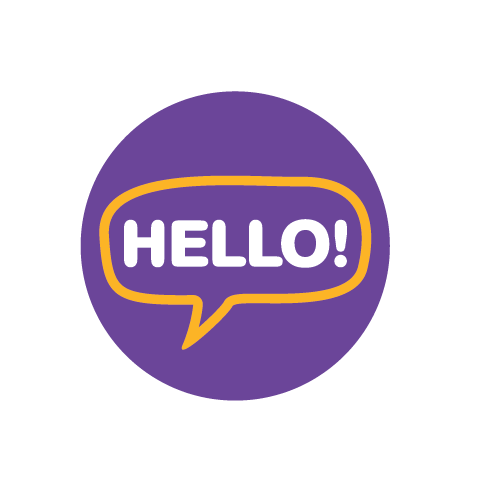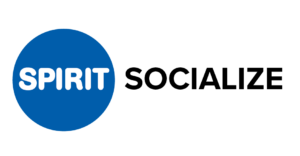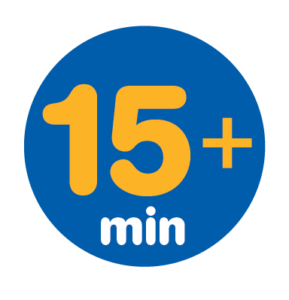Flex 1.0 Free Class Sample
CLASS 1 | MIRROR, MIRROR
Connect classmates with a fun, social icebreaker workout.

TRAINER OVERVIEW
- Class 1 TBH Take This Home cards, enough for each student.

WELCOME TO CLASS
Welcome to today’s class! Our topic is “Mirror, Mirror.” Today we’ll be working to build our focus to social cues so we can all stay more connected.
Our TBH Blueprint focus is the “Socialize” action point.
Memory loss can sometimes make it harder to stay focused on the social cues that help us respond and stay on track when we are speaking with each other.
We will be working on the following thinking skills today:
- Perception
- Coordination
- Attention
- Problem Solving
- Visual Skills
- Executive Control
Hand out the TBH Welcome Packet to all new students for a more complete introduction.

TBH LET'S GET IT STARTED
We are going to start with a great warm-up for our bodies and brains called TBH Let’s Get It Started.
It is a wonderful way to get us ready to focus and learn together. We’ll do this right at our seats at the beginning of every class. Just watch what I do and follow along!
(At end of warmup) Great job, everyone! We are started up and ready to go!
FEET GET STARTED!
- Tap toes on both feet, up and down. 10 repetitions. Count together 1 to 10.
- Alternate toe taps. 10 repetitions. Count together using the alphabet A to J.
LEGS GET STARTED!
- Stamp feet on the ground, alternating feet. Make “noise” with group.
- Gently kick legs out from the knee, alternating legs. 10 repetitions. Count together from A to J.
- March in place, alternating legs. 10 repetitions. If your class is physically able to march in place safely while standing, you may choose that option. Count together from 1 to 10.
ARMS GET STARTED!
- Gently shake arms, open and close hands.
- Circle wrists a few times in clockwise and counterclockwise.
- Hold arms straight out in front, shoulder level, palms facing down. Slowly lower both hands to thighs and then raise them back to shoulder level. 5 repetitions. Count from 1 to 5.
- Shrug shoulders up and down, with hands on knees. 5 repetitions. Count from A to E.
VOICES GET STARTED!
- Say “OHHHHHHHHHH.” Have group say sound with you. Hold for a few seconds.
- Say “EHHHHHHHHHH.” Have group say sound with you. Hold for a few seconds.
- Say “AHHHHHHHHHH.” Have group say sound with you. Hold for a few seconds.
- Say “OH – EH – AH.” Hold each sound for a few seconds. 3 repetitions.
BREATH GETS STARTED!
- Slow focus to bring awareness to sitting still in chair.
- Take a deep breath in through the nose.
- Exhale out through the mouth.
- Give selves big hug, wrapping arms across waist and squeezing gently, as able.
- Thank selves and send some “TBH love” to our brains!
Click to open the TBH Let’s Get It Started! playlist.
Click for the TBH Let’s Get It Started! complete guide.

LEARN THE TBH SCIENCE
Let’s move to today’s topic, “Mirror, Mirror.” It’s nice to spend time with other people, in person, over video and even on the telephone. Time with others, whether you are doing something together or just having a chat, helps keep your brain healthy. In fact, scientists have found many different ways being social is good for our brains.
Here’s one way: Socializing helps keep our thinking sharp. When we spend time together, we have to pay attention and be quick and nimble in our thinking and then, we have to remember. These are all skills that become harder with age, and also when we are living with memory loss. Being social helps us keep up those skills because when we are with other people we need to use those skills to communicate and connect with each other.
We can help ourselves stay social by strengthening our attention to social cues. Why? We communicate better when we pay close attention to social cues. For example, if the other person is smiling, we get a clue that they are feeling happy. If they look sad, something could be wrong that we want to ask about.

NOW DO IT!
Now let’s try our workout. “Mirror, Mirror” is a great way to practice paying attention to social cues. It’s also fun!
I’m going to make some movements, one at a time. You need to watch me closely, then do exactly what I am doing. We’ll do this workout together. Chances are none of us will move in exactly the same way, so don’t worry about being right or wrong.
In this class, we learn and get better by doing the workouts and supporting each other! Ready?
- Lead your class in this workout to personalize their learning of the science.
- Make simple movements with your hands, arms and face that students can “mirror” by following your motions. Use a mix of the suggested movements below alone or in combination. Try some of your own movements as well.
- With the first few movements, make sure students gets the idea of “mirroring” or following your movement. Their motions can be approximate to yours.
- Adjust the number, complexity and pace of the movements according to the ability of your students.
- When repeating this class, offer an alternative selection and order of the movements.
SUGGESTED “MIRROR, MIRROR” MOVEMENTS
- Clockwise Circles. Begin by making a few big clockwise circles with your right hand. Then switch the direction of the circle. Next, do the same using your left hand.
- Figure Eight. Draw a figure eight in the air using your right hand. Repeat with your left hand.
- Shoulder Shrugs. Shrug your shoulders up and down.
- Shoulder Brush. “Brush” off your shoulder using your opposite hand (left shoulder, right hand).
- Shoulder In. Turn at the waist, putting one shoulder and then the other towards your midline.
- Ear Tugs. Tug gently on your ear lobes.
- Head Pat. Pat the top of your head.
- Thinker’s Pose. Cross one arm across your waist, resting the elbow of the opposite arm in your hand. Rest your chin in the palm of the opposite arm.
- Face Squints. “Squint” your face, tightening up and releasing your eyes, nose and mouth.
- All Smiles. Smile broadly, looking around at the students.
- Make It Harder. Have students take turns setting the movement for others to follow. If physically together, break your class into pairs. Have members of each pair take turns making movements for the other to “mirror.”
- Make It Easier. Keep movements very simple and go slowly. Repeat a few movements a few times rather than creating lots of new ones.
- One-to-One Delivery. Take turns creating movements for each other to follow, adapting for your client’s ability level. Add additional things to “mirror” such as repeating words after each other (try some easy lines of poetry, for example) or drawing simple shapes with colored pencils or pens.
- Virtual Delivery. Encourage distance learners individually. Narrate your movements as you make them (i.e., “I am making a big circle with my right hand”) .

TBH TAKEAWAY
 Share this brief wrap-up to end the workout.
Share this brief wrap-up to end the workout.- Distribute the TBH Take This Home card for this class.
- Ask students to share how they feel after today’s class
I enjoyed practicing “Mirror, Mirror” with all of you. It’s a great way to improve our attention to social cues, which are so important to staying connected to each other. I hope you will keep building your awareness of social cues by practicing with each other, with friends and with family. This is an easy exercise to do over video as well.
Here is a TBH Take This Home card for this class. It will remind you what we learned together today and help you keep up this brain workout on your own.
How do you feel after today’s workout?

TBH TAKE A BREATH
Let’s wrap up with “TBH Take a Breath.” Being mindful and sharing some positive thoughts gives us a chance to think about what we have learned together and how we can use it in our daily lives. Research shows that mindfulness practices like this supports brain health when living with dementia. And it is a wonderful way to end our time in class together.
- Have students get comfortable, resting both feet flat on the floor, hands resting in their laps.
- Have students close their eyes and keep them gently closed.
- Ask students to focus their attention on their breathing, noticing the rate and rhythm of their breath. Allow them to focus on their natural breathing for a few moments.
- Instruct students to begin rhythmic breathing. Ask them to inhale slowly and deeply through their nostrils, breathing gently into their chest and belly. Then ask them to exhale slowly through their lips, slowing the rate and rhythm of their breath.
- Have students continue rhythmic breathing, instructing them to continue to focus on gently and slowly inhaling and exhaling, allowing their attention to simply “ride” the wave of their breath. Allow them to focus on rhythmic breathing for several moments.
- Offer the following positive affirmation statements below in a calm, slow voice. Invite students to simply listen, repeat the phrase silently to themselves, or to think about what each statement means to them.
My body is relaxed.
I am grateful for my family.
I am grateful for my friends.
I am grateful for myself.
- Pause for several moments.
- End the exercise by inviting students to bring their awareness back to the room, gently opening their eyes and becoming more aware of their surroundings.
- Invite them to end practice with gratitude for taking a moment for themselves, for the chance to learn together and connect with each other.
Click for the TBH Take a Breath music playlist.
Click to open the TBH Take A Breath complete guide.

CLASS RESOURCES
TBH TAKEAWAY HANDOUTS
Download and provide your students with the following handouts.
Class 1 TBH Take This Home Cards. Use the Class 1 TBH Take This Home cards for the TBH Takeaway closing activity. Print out enough copies of the cards so that each class member has one to take home. Print the cards two-sided and in color. Cut them apart. If possible, laminate the cards for easier handling and durability. If you’d like, punch a hole in the card and provide a small mountable hook so students can keep the cards in a visible spot at home.
OTHER RESOURCES
AARP Foundation Connect 2 Affect Website. This website has a number of resources you can use to combat isolation in your community.
The Brain and Social Connectedness: GCBH Recommendations on Social Engagement and Brain Health. Global Council on Brain Health (2017).














